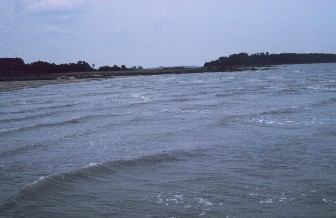|
|
 |
|
|
|
 |
| |
|
|
 |
How are
people changing
the climate?
Read more |
2. What will
a warmer world be like?
Vulnerability and adaptation
How much a country is affected depends, of course, on how much it is exposed to climate change. For example, a country without a coastline will not be exposed to sea level rise, and it is unlikely that Northern Europe will be especially exposed to drought. But how hard a country is hit depends not only on what particular changes it is exposed to, but how well it is able to cope with or adapt to these changes. In other words, the overall impact of climate change on a country depends both on its vulnerability and on its adaptive capacity. |
|
|
|
|
 |
|
Vulnerability refers to how easily a country can be damaged by climate change. Adaptive capacity, on the other hand, refers to how able a society is to make the necessary changes to be better prepared to handle climate change.
A vulnerable society with little adaptive capacity will suffer more from climate change than a society that is less vulnerable or has a greater adaptive capacity. It is often the case that the poorest countries are the worst off when it comes to both vulnerability and adaptive capacity.
Example: Vulnerability to sea-level rise
Today, 46 million people live in flood-endangered areas. A sea-level rise of half a meter will put 92 million people at risk, while a rise of one meter increases the number to 118 million (this is without taking future population growth into consideration).
Loss of land area can be significant for coastal and island states and flat lowlands such as the Netherlands, Denmark, the Maldives, and Bangladesh.
|
Although Denmark and the Netherlands are both rich, European countries, there are some differences in vulnerability. Compared to Denmark, the Netherlands has a shorter coastline to secure plus it already has a well-developed dike network and extensive experience in building dikes. In this sense, Denmark is more vulnerable than the Netherlands, but because both the Netherlands and Denmark are rich countries, they both have good possibilities to build dikes and take other actions to limit the economic damages and losses of life brought about by sea-level rise.
|
 |
 |
 |
|
1. Several flat coastal lands and islands may be exposed to rising sea level. Photo: NOAA Central Library
|
|
|
In contrast, agriculture is Bangladesh’s main industry, and it is one of the world’s poorest and most densely populated countries. It often experiences flooding that takes the lives of many people. A rise in sea-level could put large populated areas under water and put even larger areas at risk of flood. Because the country’s economy and the people’s access to food depend on agriculture, Bangladesh is very vulnerable to flooding and flood-related catastrophes. Moreover, a poor country like Bangladesh has little adaptive capacity because it cannot afford to build dikes and in other ways prepare for a rise in sea level. Bangladesh can thus be seriously affected and suffer great losses of both materials and human lives.
|
|
Back to Basics-section
Author: Camilla Schreiner - CICERO (Center for International Climate and Environmental Research - Oslo) - Norway. Scientific reviewers: Andreas Tjernshaugen - CICERO (Center for International Climate and Environmental Research - Oslo) - Norway - 2004-01-20 and Knut Alfsen - Statistics Norway - Norway - 2003-09-12. Educational reviewer: Nina Arnesen - Marienlyst school in Oslo - Norway - 2004-03-10. Last update: 2004-03-27.
|
|
 |
|









